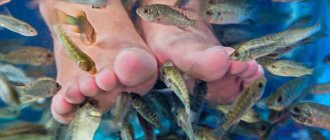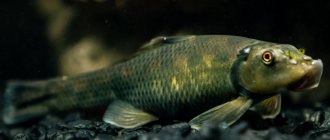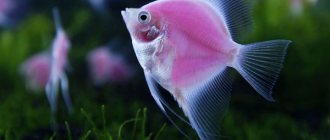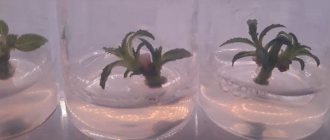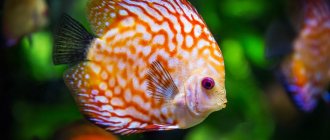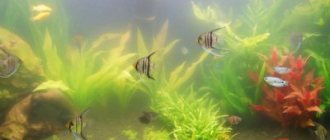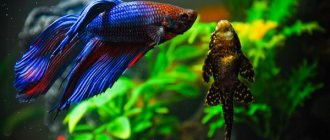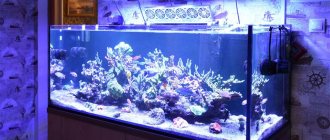Just 10 years ago in Russia and European countries, no one knew the name of the fish that do peeling. And those who have never vacationed on the coast of Turkey or Syria did not even suspect the existence of the exotic Garra Rufa pedicure.
In the Middle East, the procedure appeared 5 centuries ago . It was then that local healers discovered: if you expose the rough skin of your feet to these nimble sea inhabitants for six months, you can get rid of many dermatological problems.
Fish peeling is experiencing a surge in popularity in the CIS countries: a fun procedure suitable for adults, children and pensioners, lovers and singles . Pisces do not need vacation and employment according to the Labor Code of the Russian Federation, but at the same time they are ready to work for you 24/7.
However, as with any venture, the details are critical to the success of a fish spa business. In order for the business to develop, the fish to be healthy, and the premises to pay for itself, it makes sense to turn to experts from the first days. They will teach how to care for marine workers, advise on legal issues, and suggest proven solutions from the height of their experience.
You need to introduce a fashionable new product into beauty salons wisely: the business plan can be downloaded for free on the Rufaspa website. There you can also get advice on any other questions about exotic SPA. Well, we’ll tell you further how to avoid problems when visiting a salon.
WHAT IS FISH PEELING
The Turks observed this method of cleansing and healing in wildlife: under natural conditions, these unusual fish feed on organic debris from the skin of sperm whales.
The name “Garra Rufa” is translated from Turkish as “Doctor Fish” , because the saliva and mucus of these representatives of the carp family contain special medicinal enzymes.
Today, fish spas can be found in all corners of the world. Peeling fish are especially popular among tourists.
In pursuit of impressions and fueled by all-inclusive alcohol, vacationers don’t even think about the unsanitary conditions of coastal SPA establishments, but in vain. Next we will tell you why.
Pros and cons of the FISH SPA procedure
Of course, humanity has not yet invented procedures that are ideal in all respects. Likewise, fish that peel are useful in some ways, but harmful in others if hygiene is neglected.
To be fair, let's first look at the advantages:
- Painless fish pedicure or manicure. The temperature in the Garra Rufa aquarium is maintained at 32°C. Under such conditions, human skin softens easily and quickly, which allows dead tissue to be eliminated without any discomfort. The fish have no teeth: only soft jaws and tickling antennae.
- Simultaneous micromassage activates metabolic processes, improves cellular respiration and blood circulation.
- The relaxing effect allows you to escape from the hustle and bustle and get rid of neurosomatic tension.
- The enzymes in the saliva of these 8-centimeter “cosmetologists” have a softening and antiseptic effect (for example, dithranol is used in the treatment of psoriasis).
- The targeted effect on hardened tissues keeps living epidermal cells intact, unlike chemical analogues of the procedure.
- The skin becomes softer , and, although the purely cosmetic effect of a regular pedicure is 6 times higher, for example, it is much easier to lure a man to a fish peel than to a beauty salon: even a brutal biker will allow the fish to “bite his legs” for fun.
We recommend: What is FRACTIONAL LASER PEELING. Doctors comment
Alas, sea healers are not omnipotent, and a fish SPA also has its disadvantages:
- Even a course of 5-7 sessions will not replace a classic pedicure : corns, calluses and mycoses, if any, will only slightly decrease.
- The fish undergo a “medical examination” only when “hired” : in the future, no one checks them for viruses and bacteria either daily or after clients. But each Garra Rufa can have up to 12 “patients” a day! Think about it: you are not even allowed to try on shoes in stores without a follower...
- The sanitary and epidemiological station does not control such establishments : in the young market there are no standards for disinfecting equipment or checking clients to ensure there are no open wounds.
- Live Garra Rufa fish cannot be sterilized either by heat or chemical means: this is what caused the service to be banned in 14 states of America. Even if the aquarium is cleaned after each guest, the little workers will still defecate pieces of human skin directly into the common container of water, spreading infections.
- Foci of some localized dermatological diseases can spread through skin contact with the chair throughout the client's body (using the principle of self-infection). Therefore, even if each client brings a health certificate, it is better to ask and examine the skin, just in case. The aquarium water is sterilized after each client, but the chair is not. Therefore, it is ideal to wipe it with a cloth containing Miramistin.
- There is a Chinese counterfeit of Garra Rufu on the market: in appearance they are very similar, with the only difference being that the chin-chin fish bites off pieces of living skin, and this, as you understand, does not add sanitation and comfort.
EXPERT'S COMMENT
Stanislav Zharikov | Shop “Everything for Garra Rufa – RufaSpa:
“Not a single case of contracting skin diseases in this way has yet been registered. After all, a client with bleeding wounds will not be allowed into the salon.
It is important to purchase healthy fish that have undergone special quarantine: then the risks tend to zero. To do this, you need to contact professionals who will be able to accurately determine whether there was a quarantine.”
Stanislav Zharikov
Application area
Fish peeling includes not only manicure and pedicure: arms, legs, back, shoulders, buttocks and even the décolleté and face . Simply put, a person can completely immerse himself in a pool with flocks of Garra Rufa and enjoy the process (unless, of course, he is timid).
INTERESTING FACT
Facial peeling with fish is the rarest procedure with a slight lifting effect. With long-term course use, it removes not only horn cells, but also freckles and post-acne.
Who is suitable and who is not?
The list of side effects from pedicure with Garra Rufa fish echoes the indications for the procedure. Therefore, it is very important to consider in what cases ichthyotherapy is prescribed:
- Skin fungi;
- Psoriasis;
- Eczema;
- Hyperkeratosis (thickening of the stratum corneum);
- Ichthyosis (gene mutation with the formation of “fish scales” on the skin);
- Ringworm and pigmentation disorders (vitiligo);
- Trophic lesions of the epidermis (for example, bedsores).
The list of contraindications is as follows:
- Malignant tumors;
- Lupus;
- Neurodermatitis (allergic inflammation);
- Infectious skin diseases;
- Thrombophlebitis;
- Acne;
- Open wounds.
If you have this type of disease, entry to the fish salon must be reserved.
We recommend: What is LASER FACIAL PEELING: types, pros and cons, how it is carried out
Indications and contraindications
Fish therapy may be useful for the following ailments:
- vitiligo;
- psoriasis;
- hyperkeratosis;
- ichthyosis;
- lichen planus;
- neurodermatitis;
- allergic form of eczema in young children;
- cutaneous mycoses;
- acne;
- eczema.
This procedure can be used at any age. As for contraindications to treatment with fish, these include:
- lupus erythematosus;
- malignant skin tumors;
- psoriatic neuroderma.
WHAT DOES THE FISH PEELING PROCEDURE LOOK LIKE?
Peeling with garra fish is usually carried out in the following sequence:
- Preparing for the session. You should stop using creams in the area of intended exfoliation 2 days in advance: this may make it difficult for marine inhabitants to work.
- Visit to the salon. A specially trained specialist (preferably a dermatologist) is obliged to examine the client for the presence of open wounds and, if they are found, prohibit the procedure until complete healing.
- Steam bath (10 minutes). This is an optional step, but it can facilitate and speed up the removal of the stratum corneum of the epidermis.
- Wash the desired area of skin with soap . Sometimes an antiseptic is also applied at the end.
- Direct peeling with immersion in the aquarium of the desired part of the body for 10-30 minutes.
INTERESTING FACT
For foot peeling you will need 300 fish, for a “manicure” - 150-200 pieces.
Reviews
Cosmetic procedures using these creatures are widespread in many countries. Most of those who tried it are satisfied with the result - clean skin after fish peeling, the skin of the legs becomes smooth, peeling disappears. But this procedure does not completely eliminate problems, for example, too rough skin, corns and other similar troubles.
HOW TO PROTECT YOURSELF
There are several ways to reduce the risks of peeling with Garra fish:
- Thorough self-examination. Take the time to check the skin at the treatment site to see if there are any wounds, suspicious plaques or spots on your legs. If you notice any warning signs, it is best to first consult a dermatologist.
- Checking the responsibility of establishment staff. If the salon does not examine you before the session for open wounds and skin infections, it is better to refuse treatment: this means that it is a common thing here to turn a blind eye to compliance with hygiene requirements.
- Insist on a pause after another client for 5-7 minutes so that the water passes through the filtration and sterilization system: this will destroy all fungi and ciliates. In a budget beauty salon, this requirement may seem inappropriate to you: well, so much the better. A salon that values its reputation will definitely make concessions, and you don’t need another.
- To distinguish Garra Rufa from fakes, there is a proven method. Make sure that the fish's mouth is below eye level and has a round (not pointy, like a chin-chin) shape. Additionally, you should not feel any pain during the pedicure. Other signs of a real Garra Rufa include a steel-colored body, a scarlet fin, and a desire to be in an empty pool closer to the bottom.
We recommend: PHENOL PEEL: gold standard or unnecessary risk
If you have verified the authenticity of your “exfoliation master” and have taken all precautions, the only advice is: during the procedure, try not to make sudden movements so as not to scare the fish.
Who are the Garra Rufas?
Garra Rufa are small, inconspicuous-looking gray fish. In their natural environment, they live in the waters of the Middle East. Fish feed on plankton and the remains of organic substances covering the skin of whales. And when in contact with human skin, Garra Rufa “work” on the same principle - they eat up impurities from the skin.
Translated from Turkish, Garra Rufa means “doctor fish.” And this is quite justified - the saliva of these fish contains a special component that promotes the healing of microwounds on the skin. And the mucus that is secreted from the fish’s body also has a beneficial effect on the cover.
No, fish won't bite off your fingers if you put your feet in the aquarium - they don't have teeth to cause injury. Their oral cavity is like sandpaper removing dead cells from the cover.
BUSINESS FISH
Let's consider another possibility: for those who are interested in how such private enterprises are structured from the inside.
Business payback
Peeling fish as a business is designed for a payback of up to 3 months. The main cost items for business planning will be as follows:
- Equipment - aquariums, 250 marine “workers”, equipment for the office itself;
- Renting premises - an office with a transparent display window somewhere in a popular shopping center is good;
- Consumables - aquarium service (filters, lighting), drinks, towels, etc.
With an average price for a procedure of 20 € per 1 hour and a salon workload of 10 hours daily, income before costs will be, according to analysts, approx. 200€.
Where to buy fish? Medicinal fish and their price
Knowledgeable people advise purchasing sea healers in Europe, and not in Asia, due to their better adaptation to our realities. Equipment suppliers will provide all the necessary components, as well as help train employees and issue a veterinary permit, which must be renewed on their own.
Fish 3.5-4 cm long cost about 1 euro per piece. (when purchasing a batch of 100 pcs.)
Permit to operate
The usual requirements for beauty salons do not apply in this situation: at least in the countries of the former CIS. Regulatory authorities do not yet require a license for this type of activity. That is, you can enter the market without employees with medical education and without long paper formalities.
Arrangement of the FISH SPA room
By default, the cabin must have running water and sewerage. It is better to choose chairs for procedures from washable material. It is also worth taking care of a relaxing atmosphere, music and lighting, as well as bottled water, tea, coffee and aromatherapy products.
Fish of the carp family
Fish of the carp family Garra rufa belong to the class of ray-finned fish . They live in the Tigris and Euphrates rivers, where the water warms up to a comfortable temperature all year round, as well as in the thermal springs of the Kangal Gorge, located in Turkey.
They have a gray or gray-brown color, and the only decorative element of their appearance is a red fin on the tail. The size of the fish is approximately from 2 to 15 cm.
Acquaintance with fish, like all other discoveries of mankind, happened by accident.
At the beginning of the 20th century in Turkey, two brothers came across a hot spring in which they saw many small fish. As soon as the people plunged into the water, the fish immediately swam up to them and began to nibble their skin. The touches of the fish were so pleasant that the brothers began to visit the unusual pool every day.
One of them, who suffered from a skin disease , noticed significant improvements in himself. The brothers shared their discovery with other residents of the area.
This is how the Garra Rufas became famous.
Initially, fish were used mainly to treat skin diseases: eczema, dermatitis, psoriasis.
Gradually they began to be used in cosmetology for peeling. For example, on the Chinese island of Hainan, several pools with heated mineral water and fish were installed. Previously, the services of fish doctors could only be obtained in Asian countries.
Today, they have learned to breed Asian fish in Europe.
Feeding
Rufa are absolutely unpretentious; at home they eat frozen, live, dry and vegetable food.
They will be happy to eat:
- bloodworm;
- daphnia;
- Artemia;
- tubifex;
- small worms;
- spinach;
- fresh cucumber;
- zucchini;
- sweet varieties of apples.
Vegetables and fruits are given only after being scalded with boiling water. Dry food should have a predominance of plant components.
Features of the diet in salons
In SPA salons, rufa is fed with special food, in which the necessary elements are specially selected.
Feeding the fry
The fry feed on their own immediately after birth. They are fed with ciliates, live dust, and Artemia nauplii.
Parents do not take part in the future life of their offspring, so the fry hatch from the eggs completely ready for independent living
Doctors' opinion
We suggest that you read reviews from doctors about peeling with live fish.
Anatoly, cosmetologist
The fashion for spa peeling with live fish has appeared quite recently. Few clients expect amazing results from the procedure; many simply like the sensation of tickling on the body. Personally, I recommend carefully checking the salon that performs fish peeling, and only then agreeing to the procedure.
Elena, dermatologist
I do not recommend using fish peels to remove dead skin cells. Firstly, this is dangerous, since the fish are only checked for infections at the initial stage. Secondly, the effect of the procedure appears only after several sessions.
Conditions of detention
Rufas are kept only in a flock of at least 5 individuals. Conditions are created as close as possible to the natural habitat. To make the pets comfortable, a fast current must be created. Install the aquarium in a quiet place, without drafts or direct sunlight.
The reservoir is covered with a lid or cover glass; the fish may jump out or simply crawl out and die. Be sure to have a powerful filter and compressor.
Aquarium
When arranging an artificial reservoir, it should be taken into account that one fish requires 7-10 liters of water space.
Aquarium requirements:
- volume - at least 100 liters;
- soil - sand or small pebbles;
- lighting - moderate;
- decor - unpretentious plants, driftwood, artificial grottoes or caves.
Water parameters:
- temperature - 28-35ºС;
- pH - 7.0-8.0;
- pGH - 7-10.
Cleanliness in the aquarium
The cleanliness of the aquarium is maintained by daily cleaning of the soil with a siphon and a weekly change of 20% (of the volume of the vessel) of water.
The aquarium should have a sufficient amount of vegetation and shelter so that fish standing on the bottom rung of the hierarchical ladder can hide from stronger ones.
Fish diseases
Garra fish, like all cyprinids, are susceptible to a disease called ichthyophthyriosis. The disease is caused by a parasitic ciliate, is contagious, and develops very quickly. The incubation period lasts about two weeks. The body of the fish is affected, on which pustules (bumps) form, and if the necessary measures are not taken within a few days, the entire school may die completely.
A solution is used as treatment: 1 liter of formalin is mixed with 3.5 g. malachite green oxalate and the same amount of methylene blue. A 100 liter container requires 1 ml. solution. After two days, replace half the water. During treatment, it is recommended to transplant all inhabitants into another aquarium.
Breeding at home
For many Garra Rufa owners, breeding at home is of commercial interest. Some experts argue that breeding fish in captivity is unrealistic, but experienced fish farmers breed rufa productively at home.
Selection of individuals
For full breeding, only fish of the Garra Rufa species are selected, and since there are a lot of closely related species, and in order not to acquire a “fake”, the fish farmer is recommended to learn about the distinctive features of the appearance of the fish before purchasing future pets.
Aquarium preparation
The spawning tank is selected with a volume of at least 100 liters with a strong current. The water temperature in it must be at least 30 ºС. No soil or plants are needed.
Spawning and rearing of fry
The female lays eggs, which the male immediately fertilizes. After this, the parents are immediately removed so that future offspring do not eat. The fry appear on the fourth day and immediately begin to swim and feed on their own.
